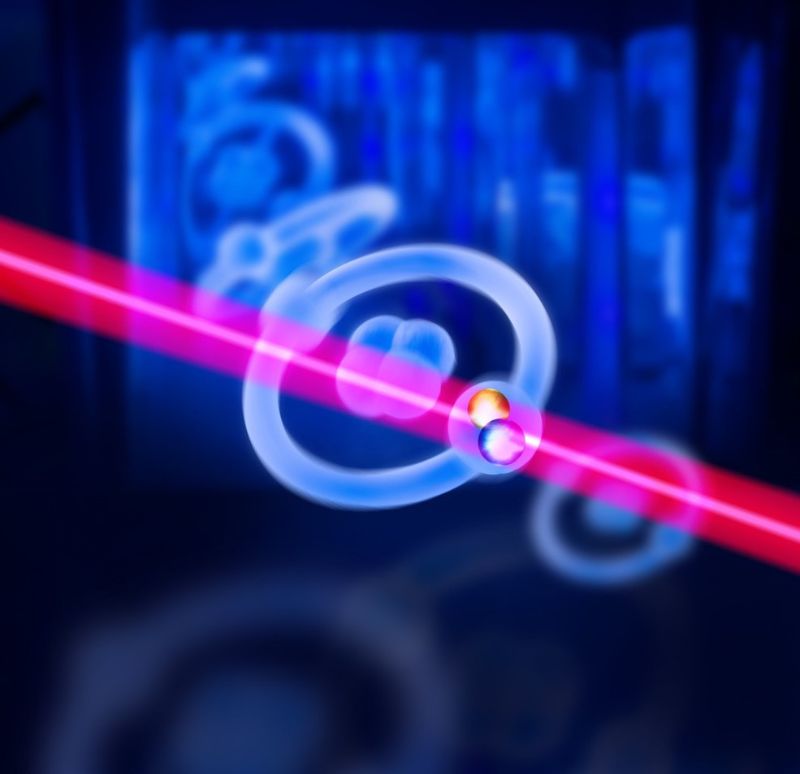Exotic matter experimentally verified for the first time
A challenging experiment with pions, which has the potential to establish a new field of research, has been successfully completed after eight years. It was a scientific marathon made possible by an international collaboration between the Max Planck Institute of Quantum Optics MPQ, the Paul Scherrer Institute PSI in Switzerland and CERN, the European Laboratory for Particle Physics.
The team’s success was to experimentally demonstrate for the first time that long-lived pionic helium atoms really exist. In this, a pion replaces one of the two electrons of the helium atom. "It is a form of chemical reaction that happens automatically," explains Masakai Hori of the MPQ.
For their experiment, the researchers from MPQ and CERN came to PSI in order to use the strongest pion source in the world, which is located here. "Only here did we have a good chance of being successful," says Anna Soter, who played a leading role in the experiment. Anna Soter has worked at PSI since 2017 and at ETH Zurich since the beginning of 2020. She also used to work at MPQ.
Pionic Helium had already been theoretically predicted in 1964 after some experiments at that time pointed towards its existence. However, it was considered extremely difficult to verify this prediction experimentally. Usually, in an atom, the extremely short-lived pion decays even sooner, namely typically within one picosecond, i.e. one trillionth of a second. However, in pionic helium, it can be conserved in a sense so it lives a thousand times longer than it does in other atoms.
The "smoking gun"
The challenge the team struggled with for eight years was proving that such a pionic helium atom exists in their experiment’s tank. The tank was filled with extremely cold, superfluid helium. In the helium atom, the pion behaves like a very heavy electron. It can only jump between discrete quantum states, like on the steps of a ladder. The team had to find a long-lived state and a very special quantum leap which they could excite with a laser and which would kick the pion into the helium nucleus and destroy the atom. Then the team could detect the debris from the breakup of the nucleus as a "smoking gun". However, the theoreticians couldn’t exactly predict at which light wavelength the quantum leap would occur. So the team had to install three complex laser systems one after the other until they were successful.
"This success opens up completely new ways to investigate pions with the methods of quantum optics," Hori rejoices. Part of these methods is laser spectroscopy, one of the most precise tools in physics. Pions in these quantum states can thus be studied with much more precision than ever before.
"With our experiment we were able to prove that this quantum state of pionic helium exists," Anna Soter is pleased to report. "This had previously only been speculated." The finding now opens up the possibility of using laser spectroscopy to examine the pion – and, in particular, to measure its mass much more accurately than before.
One of the reasons why researchers are interested in the pion is that it could help clarify the discrepancies in the Standard Model of particle physics.
A new window into the quantum cosmos
The pion belongs to the particle family of the so-called mesons. Mesons mediate the strong force between the building blocks of atomic nuclei, the neutrons and protons. Although protons with the same electrical charge repel each other violently, the stronger nuclear force binds them together to form the atomic nucleus. Without this force, our world would not exist. Mesons are fundamentally different from protons and neutrons, which are each made up of three quarks, whereas mesons consist of only two quarks.
Text: Based on a press release of the Max Planck Institute of Quantum Optics with additions by the Paul Scherrer Institute
